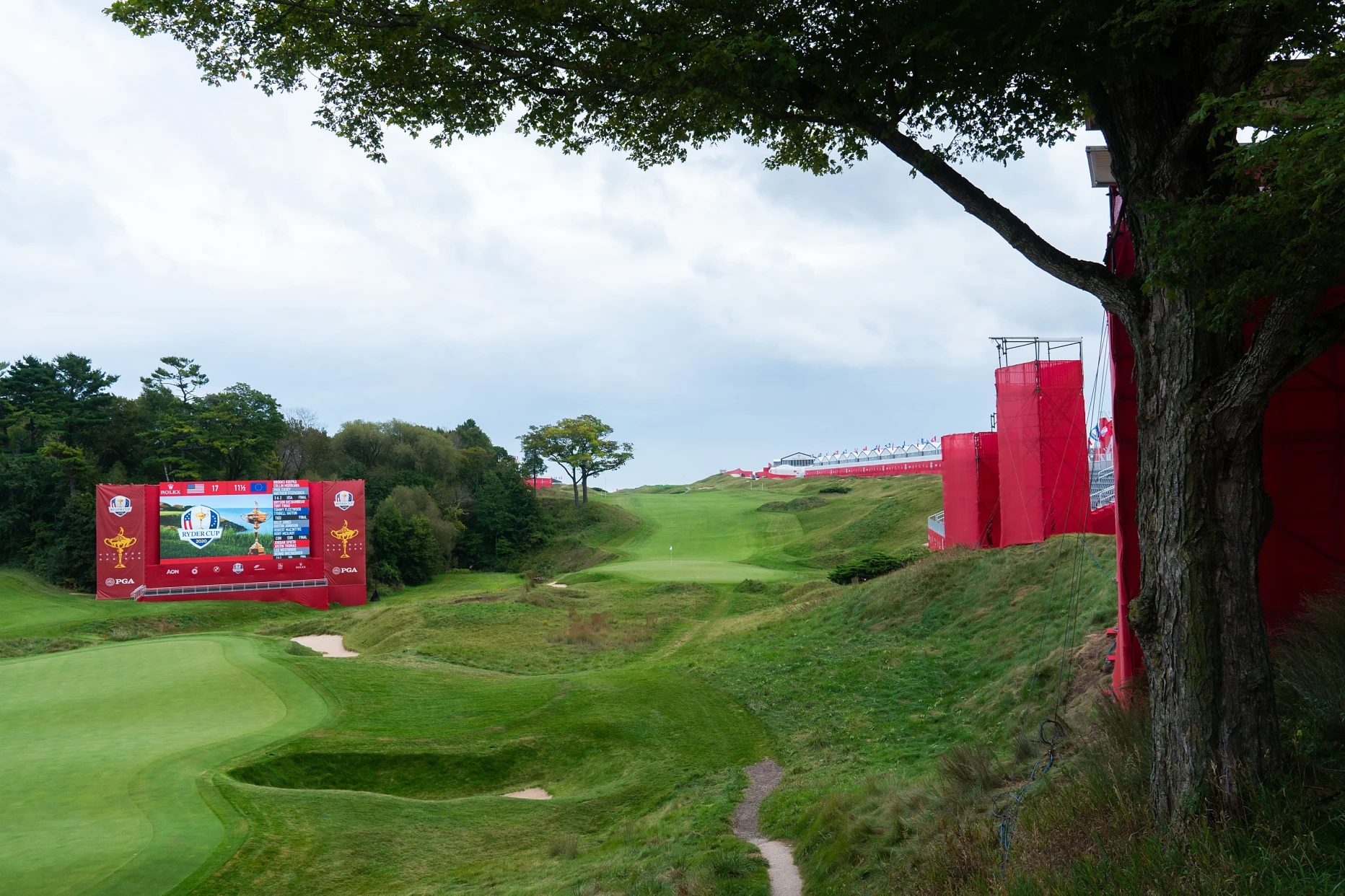Photo courtesy Hailey Garrett/PGA of America
From the Ryder Cup pool reporter
By Jeff Babineau
SHEBOYGAN, Wis. – It has taken an extra year, but the 43rd Ryder Cup finally is upon us, landing in remoteness amid tall cornfields and scruffy open fields filled with grazing cattle in the heartland of America. This week, Whistling Straits, a major championship venue built by Herb Kohler and Pete Dye for big moments such as these, will be golf’s big cheese.
This is where Steve Stricker, Wisconsin born and bred, and who keeps a home about 100 miles from these matches, hopes to turn around the puzzling American fortunes of this biennial match against Europe. He will captain the U.S. side. Europe has won four of the last five Ryder Cups, winning in Paris three years ago, and has been the victor in nine of the last 12.
Stricker has assembled a young team – at an average age of 29 years, 159 years, in fact, this will be the youngest U.S. side since the very first Ryder Cup in 1927. He has six rookies, the most on a U.S. team since 2008. He has a FedEx Cup champion (Patrick Cantlay), an Olympic gold medalist (Xander Schauffele), the Players champion and three players who have won majors in the past 12 months (Bryson DeChambeau, Dustin Johnson, Collin Morikawa). Shoot, Stricker even has an assistant captain (Phil Mickelson) who won a major (the PGA Championship) in May.
He also has big hitters that can match the brawn of Whistling Straits, a rugged track, and world-class players, with nine players residing amongst the top 11 in the Official World Golf Ranking. The Americans seem to have everything – they just haven’t found that combination of late to keep that little gold 17-inch chalice in their possession.
The U.S. has had great success playing one cup against an International team every other year and has struggled against Europe in the Ryder Cup. Part of it can be traced to the mounting pressure that the U.S. side carries on its shoulders to turn around its fortunes, especially when it is, on paper, at least, the favored side. Stricker said he is trying to bring a more relaxed vibe to the U.S. team this week. One key was bringing players and caddies in early to get to know the course. He said the U.S. team will not be out-prepared.
“I don’t know if we are getting in our own way at some times,” Stricker said on Monday as several of his players worked on their games on the practice tee and putting green. “Different competition, obviously. Europe brings a strong team, and they play well and are tough and we always have tough matches that seem to have gone their way more times than our (way) lately.
“But we look to try to change that this week and move on. We are worried about this one, and just trying to win this one.”
Irishman Padraig Harrington is leading the way for Europe, trying to keep the massive push of momentum his team enjoys. While the mighty U.S. counts nine players among the world’s top 11, Harrington has but one in that group, a good one at that in world No. 1 Jon Rahm. Rahm, the U.S. Open champion, missed the cut last week in a PGA Tour stop in California, and wasn’t feeling his best physically. But Harrington said he saw him pumping iron in the weight room on Monday and said he looked perfectly fine.
Likewise, Stricker pronounced that Brooks Koepka, a four-time major winner playing in his third Ryder Cup, is healthy and ready to go. Koepka ran into a root while striking a shot from the rough at the Tour Championship at East Lake, injuring his left wrist, and had to withdraw. He did not partake in an early U.S. team practice session held a week ago.
“I’ve been talking to him ever since it happened,” Stricker said. “You know, check in with him every couple of days. He tells me everything is 100 percent and everything is ready and raring to go. I haven’t run into him yet today. … From what I understand, he is fully healed and ready for everything.”
Harrington, who landed in Milwaukee mid-day, was asked about the great bond that Europeans share in this event, and the challenge of getting players who compete all year under several different flags to come together and play under one. How is it the team finds such great chemistry?
“Seve. Pretty straightforward. Seve,” Harrington said of late Spaniard Seve Ballesteros, who was the point man as team comprising players from Great Britain and Ireland expanded to include players across Continental Europe beginning in 1979.
“Started with Seve in the ’80s. He pushed for this to become Continental Europe rather than Great Britain and Ireland, and it was a way for Seve to legitimize The European Tour. It was a way to give The European Tour a standing. The great players in Europe at the time didn’t get great access to play in all the best events in the world. Seve was always fighting against the tide in that. And playing and winning in the Ryder Cup was the way to say that Europe deserved a seat at the table.”
Of late, Europe not only has had a seat at the table. It has feasted. Four wins in five Ryder Cups. Nine wins in the last 12. According to the rankings, the U.S. by far has the more stacked team, not to mention a golf course it can set up to play long and the prospect of 40,000 fans that will weigh heavily toward the home side. It will be loud, and there will be plenty of red, white and blue.
Here amid the fields and spaced-out farms of Wisconsin, the U.S. has just about everything, it would seem. Not it needs to find a way to land that cup.

